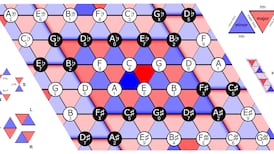The oldest ever example of right-handedness has been discovered in the 1.8 million-year-old fossilised remains of one of our early ancestors, homo habilis.
Right-handedness is dominant in humans – a unique imbalance in the animal kingdom. Most animals show preference for a dominant limb, but none come close to the same 90 per cent right-handed bias seen in humans, according to the study.
Previously, the oldest known evidence for a right-hander was about 400,000 years.
By looking at lines and cuts on the teeth of a Tanzanian fossil, named OH-65, researchers in the US have shown the preference could possibly stretch back nearly two million years.
The angle of the cuts on the front teeth gave the research team clues as to which hand the primate was predominantly using.
"Experimental work has shown these scratches were most likely produced when a stone tool was used to process material gripped between the anterior teeth and the tool occasionally struck the labial face [front surface of the teeth], leaving a permanent mark on the tooth's surface," said Dr David Frayer, the lead author and professor emeritus of anthropology at Kansas university.
The left-to-right pattern of the marks led the team to conclude they were made when OH-65 cut food held in its mouth – it pulled the food with the left hand and cut with the right.
Investigating why we have developed an innate preference for one hand over the other may reveal other important information about how we evolved.
This is based on the concept of brain lateralisation, which refers to the way some functions tend to be controlled mainly by one side of the brain over the other.
"We already know that homo habilis had brain lateralisation and was more like us than like apes. This extends it to handedness, which is key," said Dr Frayer.
“Handedness and language are controlled by different genetic systems, but there is a weak relationship between the two because both functions originate on the left side of the brain.”
While “one specimen does not make an incontrovertible case”, Dr Frayer says the study could provide early evidence of “brain lateralisation, handedness and possibly language, so maybe it all fits together in one picture”.
To view the full study, visit: http://iti.ms/2eB5ZrS











